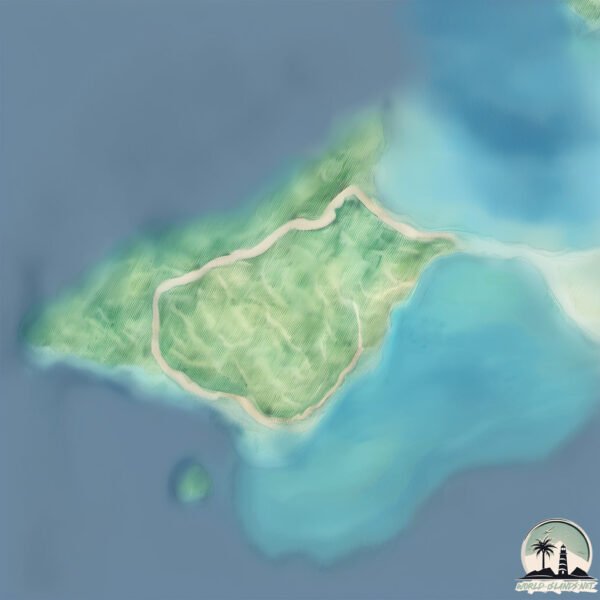Welcome to Noho Jima , a Temperate island in the Eastern China Sea, part of the majestic Pacific Ocean. This guide offers a comprehensive overview of what makes Noho Jima unique – from its geography and climate to its population, infrastructure, and beyond. Dive into the details:
Geography and size of Noho Jima
Size: 1.035 km²Coastline: 5.1 kmOcean: Pacific OceanSea: Eastern China SeaContinent: Asia
Noho Jima is a Small Island spanning 1 km² with a coastline of 5.1 km.
Archipel: Ryukyu Islands – A chain of Japanese islands stretching southwest from Kyushu to Taiwan, known for their unique Okinawan culture and subtropical climate.
Tectonic Plate: Philippine Sea – An oceanic tectonic plate beneath the Philippine Sea, east of the Philippines. It’s involved in complex interactions with the surrounding Eurasian, Pacific, and Indo-Australian plates, leading to significant volcanic and seismic activity in the region.
The geographic heart of the island is pinpointed at these coordinates:
Climate and weather of Noho Jima
Climate Zone: TemperateClimate Details: Humid Subtropical ClimateTemperature: Hot Summer
Climate Characteristics: With continuous rainfall and hot summers, this climate is common in some coastal regions, supporting diverse vegetation.
Topography and nature of Noho Jima
Timezone: UTC+09:00Timezone places: Asia/TokyoMax. Elevation: 21 m Mean Elevation: 14 mVegetation: Deciduous Broadleaf ForestTree Coverage: 22%
The mean elevation is 14 m. The highest elevation on the island reaches approximately 21 meters above sea level. The island is characterized by Plains: Flat, low-lying lands characterized by a maximum elevation of up to 200 meters. On islands, plains are typically coastal lowlands or central flat areas.
Dominating Vegetation: Deciduous Broadleaf Forest
Vegetation: 6 vegetation zones – Very Highly Diverse Island
Infrastructure and Travelling to Noho Jima
Does the island have a public airport? no .
Does the island have a major port? no .
The mean population of Noho Jima is 62 per km². Noho Jima is Gently Populated. The island belongs to Japan .
Continuing your journey, Izena Jima is the next notable island, situated merely km away.
野甫島(島の散歩)[4K] Noho Island Okinawa Japan
野甫島(のほじま)Noho Island Okinawa Japan Photographer Naritoshi Yamaoka Learn more about shimanosannpo(Island ...
野甫島(島の散歩)[4K] Noho Island Okinawa Japan
野甫島(のほじま)Noho Island Okinawa Japan Photographer Naritoshi Yamaoka ...
野甫島(のほじま)Noho Island Okinawa Japan Photographer Naritoshi Yamaoka Learn more about shimanosannpo(Island ...
【野甫島/沖縄】想像以上に絶景が多い小さな楽園を散策【観光•旅行ガイド】
煌めく海に架かる橋を渡って野甫島へ 野甫島は沖縄最北端の有人島である「伊平屋島」と橋でつながる2次離島で、サンゴ礁で ...
煌めく海に架かる橋を渡って野甫島へ 野甫島は沖縄最北端の有人島である「伊平屋島」と橋でつながる2次離島で、サンゴ礁で ...
#49 伊平屋島 野甫漁港 釣り場風景
沖縄県島尻郡伊平屋村の南に所在する野甫漁港の釣り場風景です。 釣りはもちろんのこと漁港の反対側には綺麗な砂浜が広がって ...
沖縄県島尻郡伊平屋村の南に所在する野甫漁港の釣り場風景です。 釣りはもちろんのこと漁港の反対側には綺麗な砂浜が広がって ...
Japan is classified as Developed region: G7: Group of Seven – Major advanced economies, including Canada, France, Germany, Italy, Japan, the United Kingdom, and the United States. The level of income is High income: OECD.
News – Latest Updates and Headlines from Noho Jima
Stay informed with the most recent news and important headlines from Noho Jima. Here’s a roundup of the latest developments.
Loading...
Please note: The data used here has been primarily extracted from satellite readings. Deviations from exact values may occur, particularly regarding the height of elevations and population density. Land area and coastline measurements refer to average values at mean high tide.

